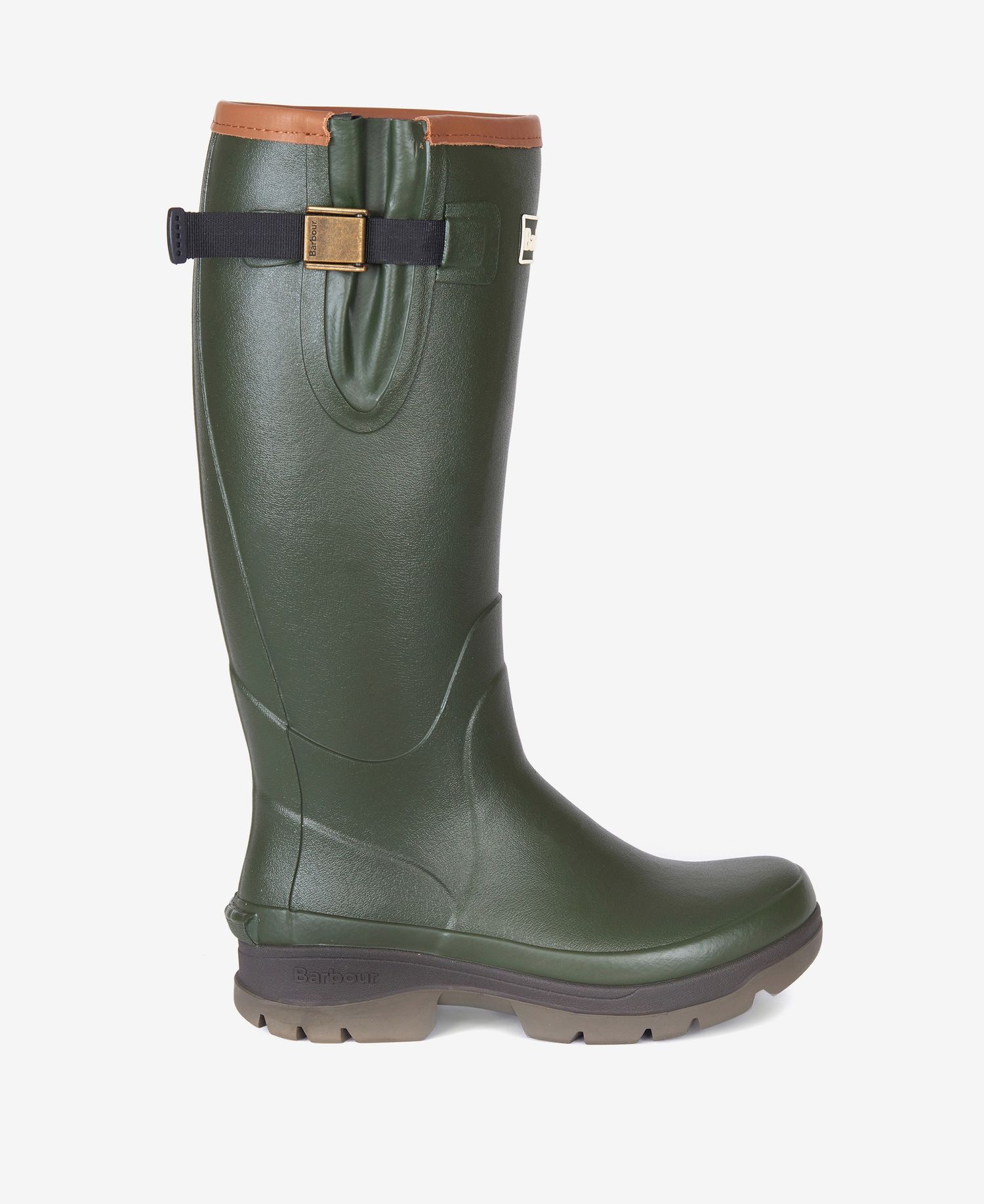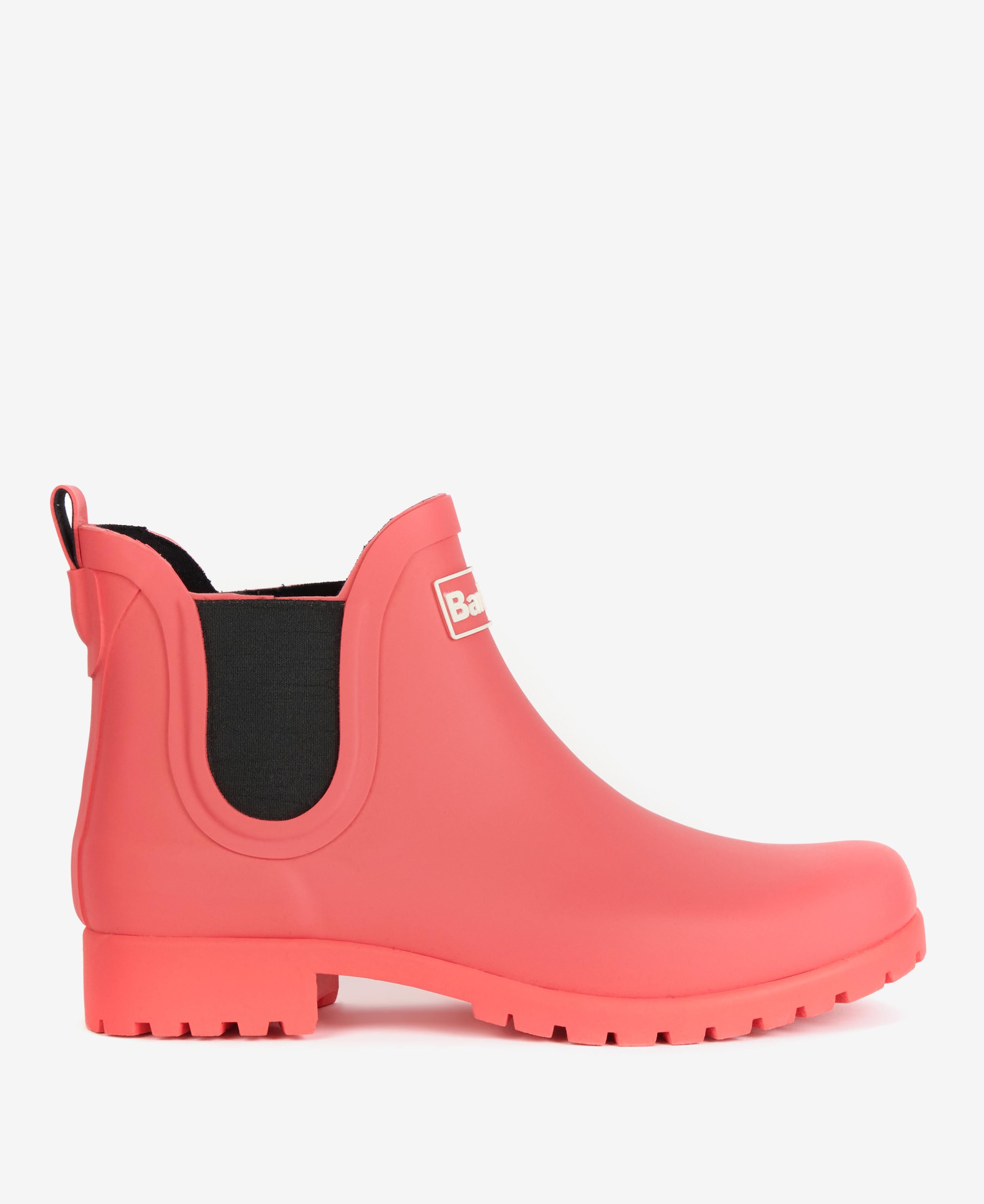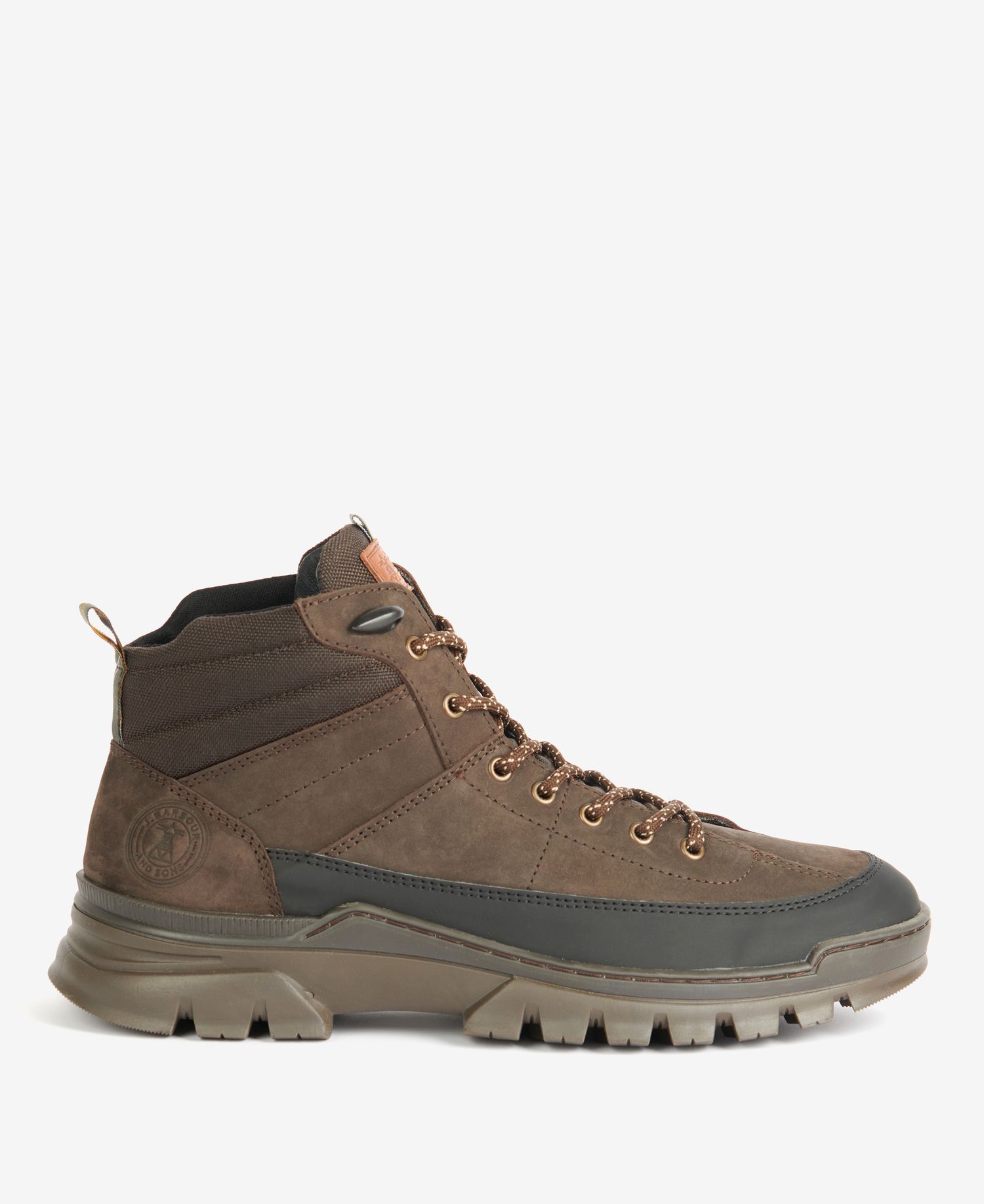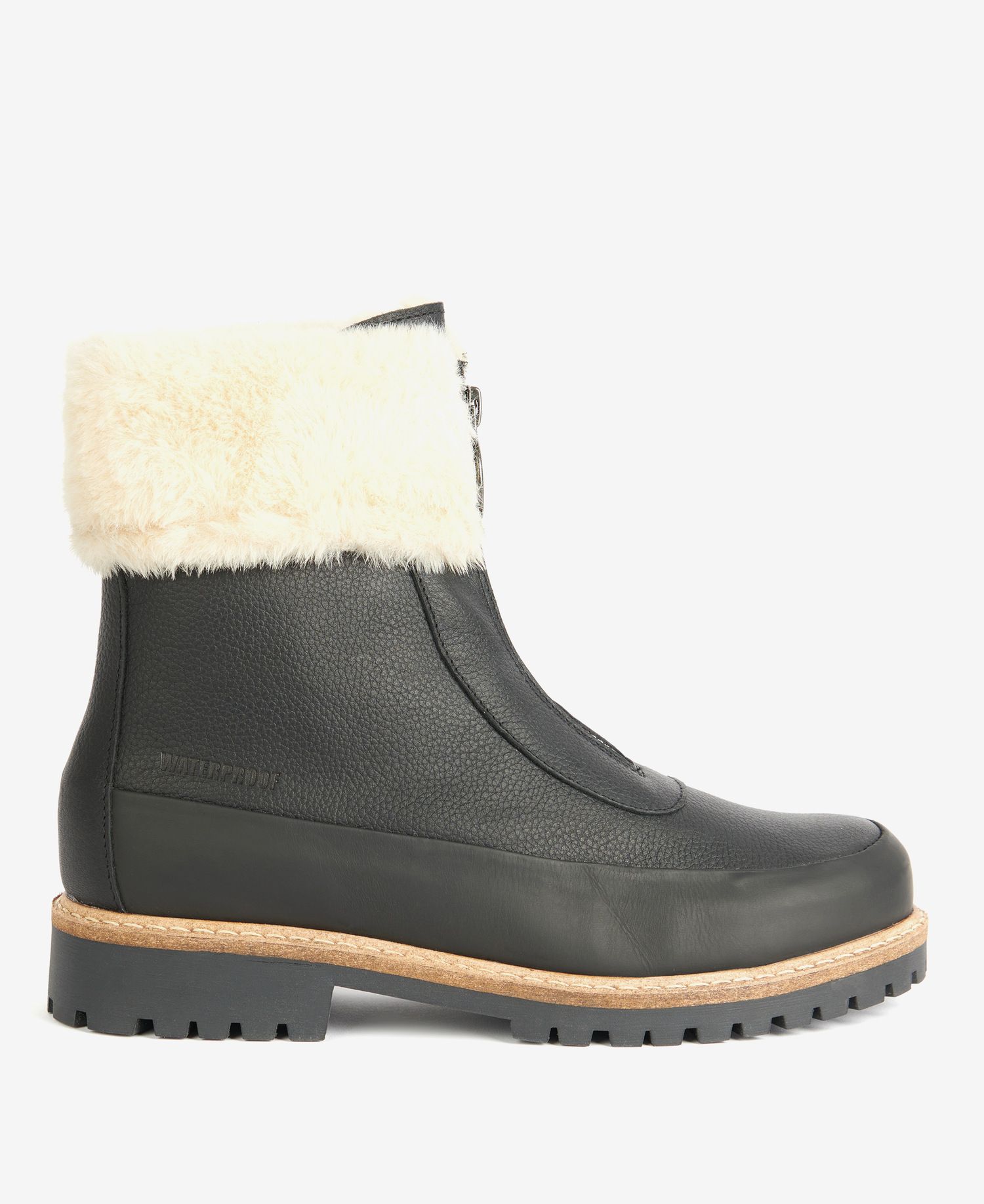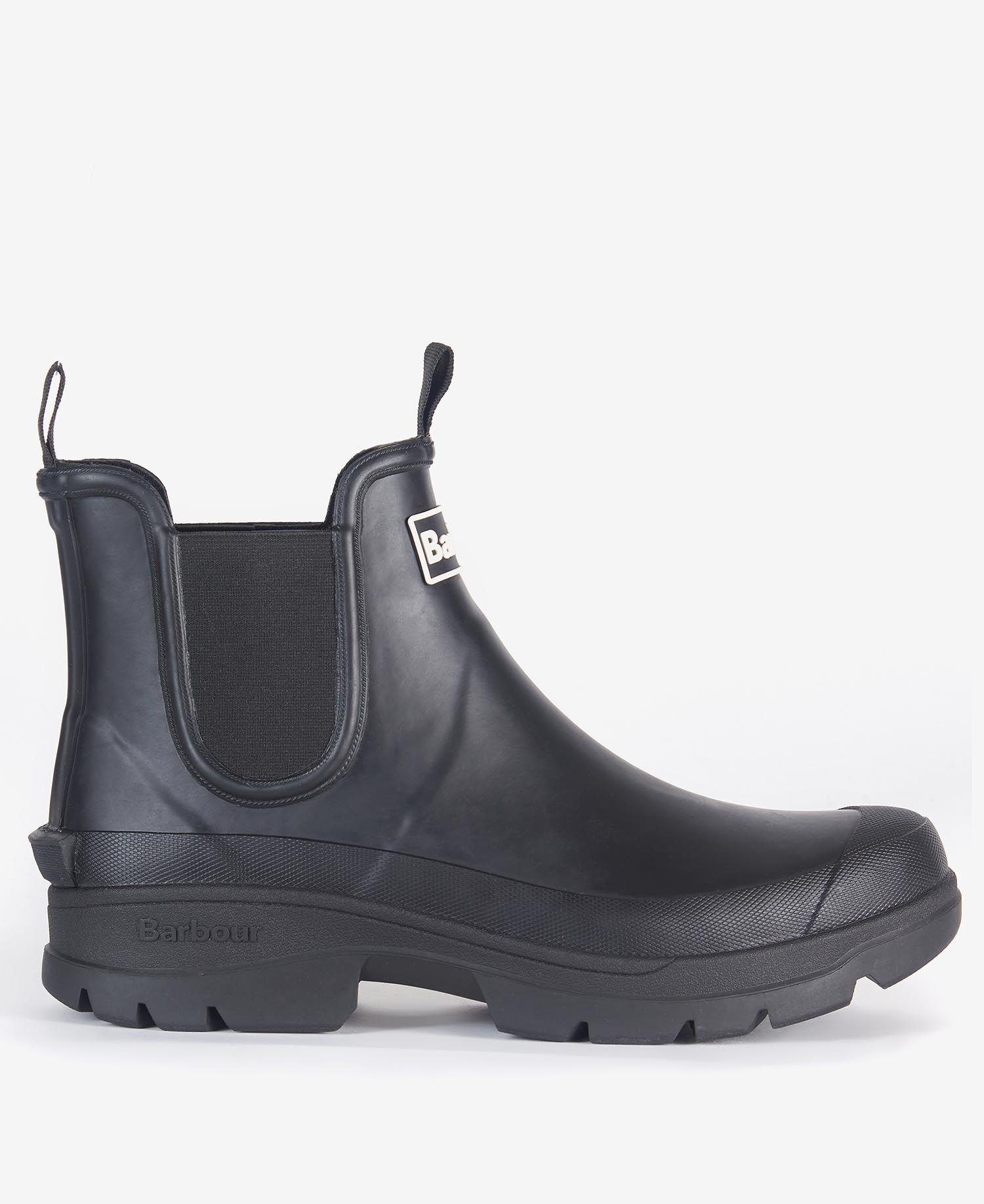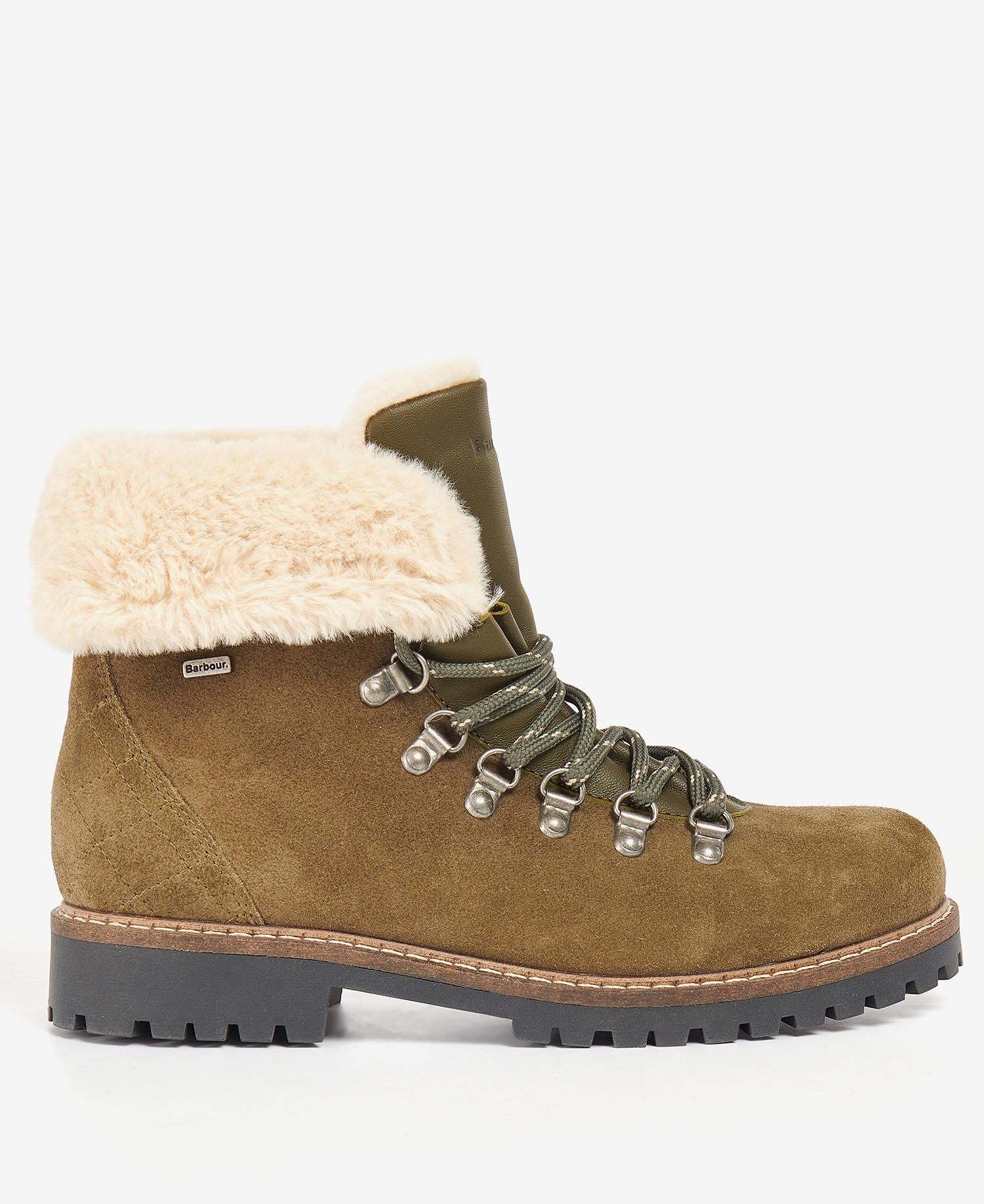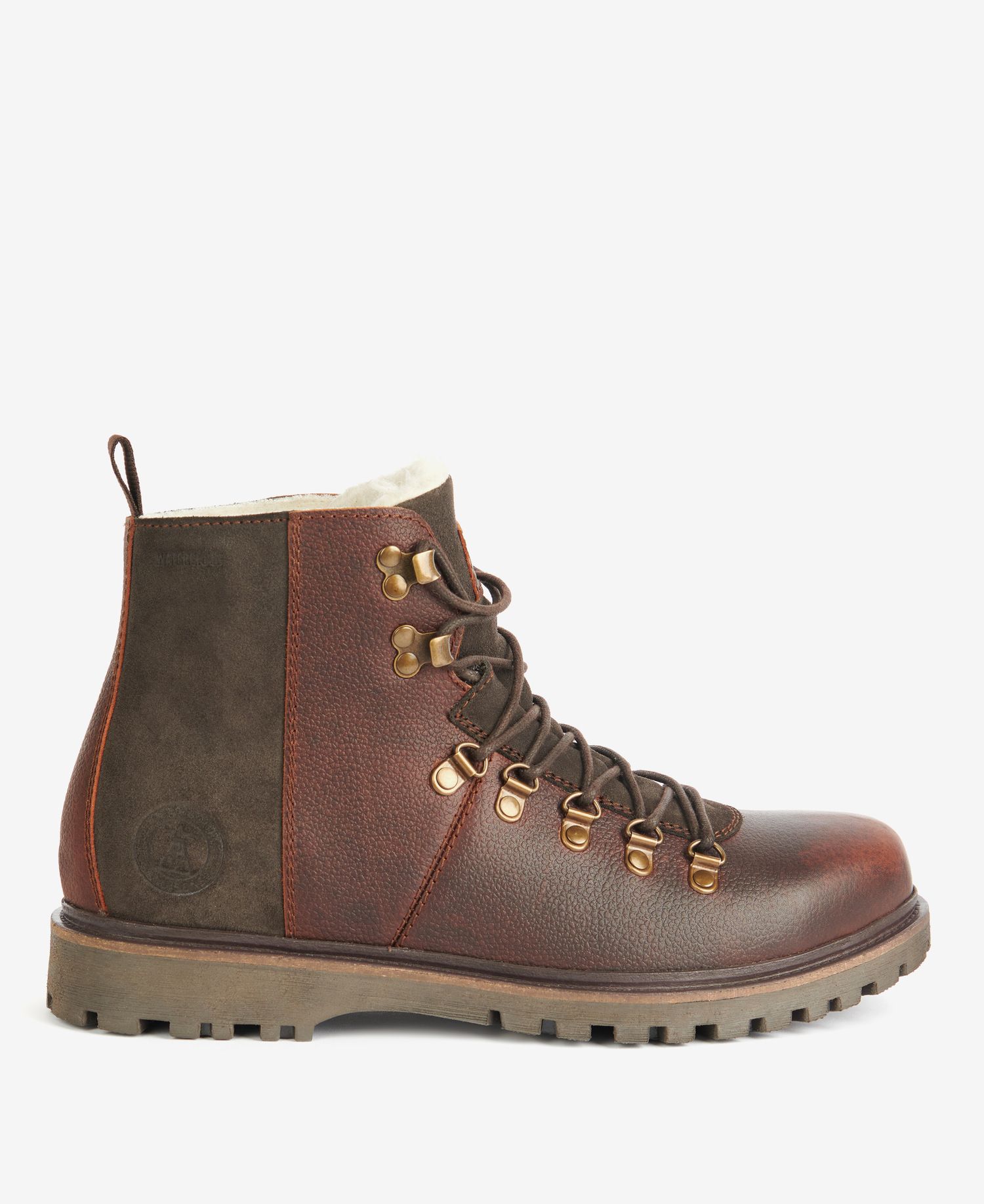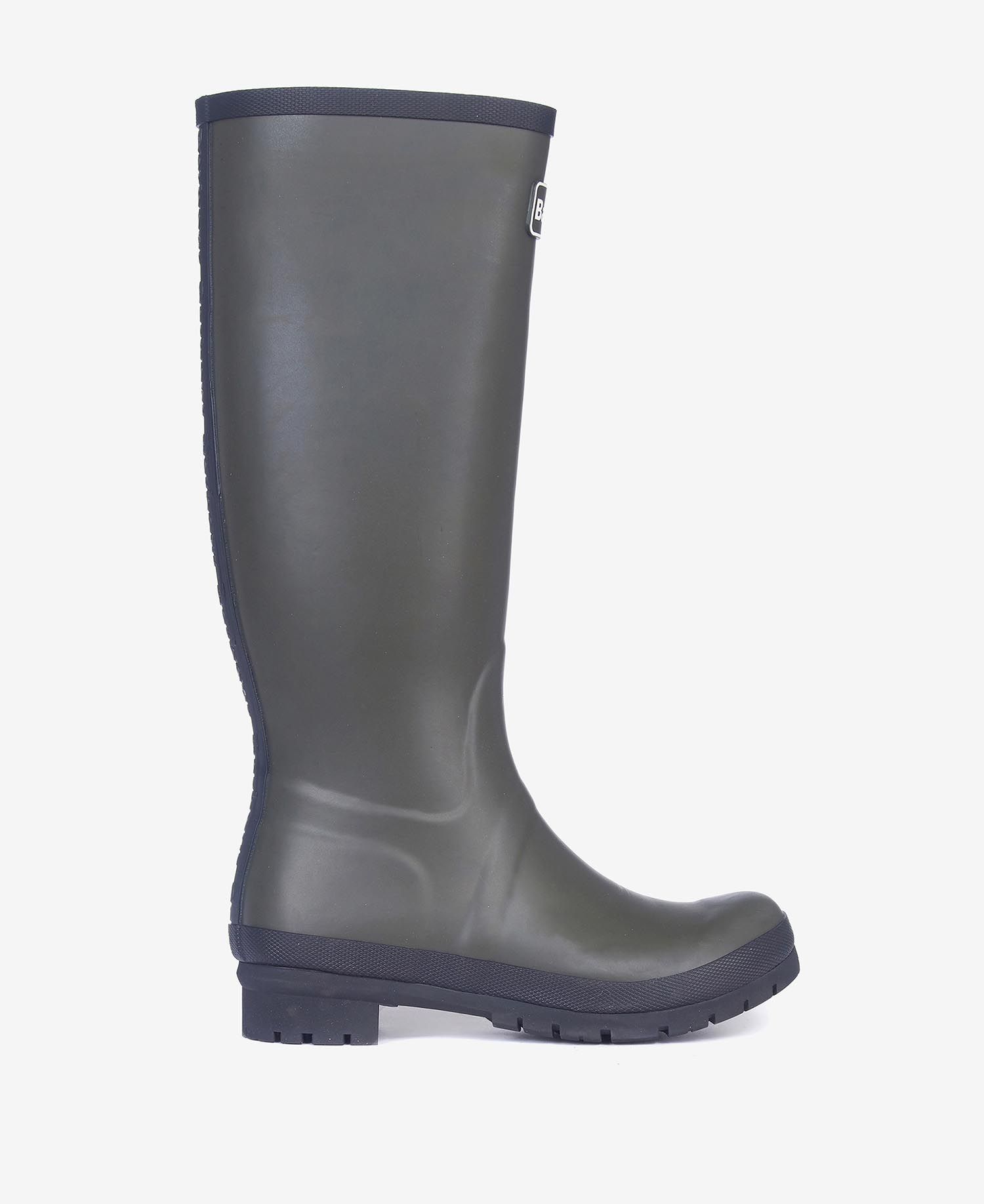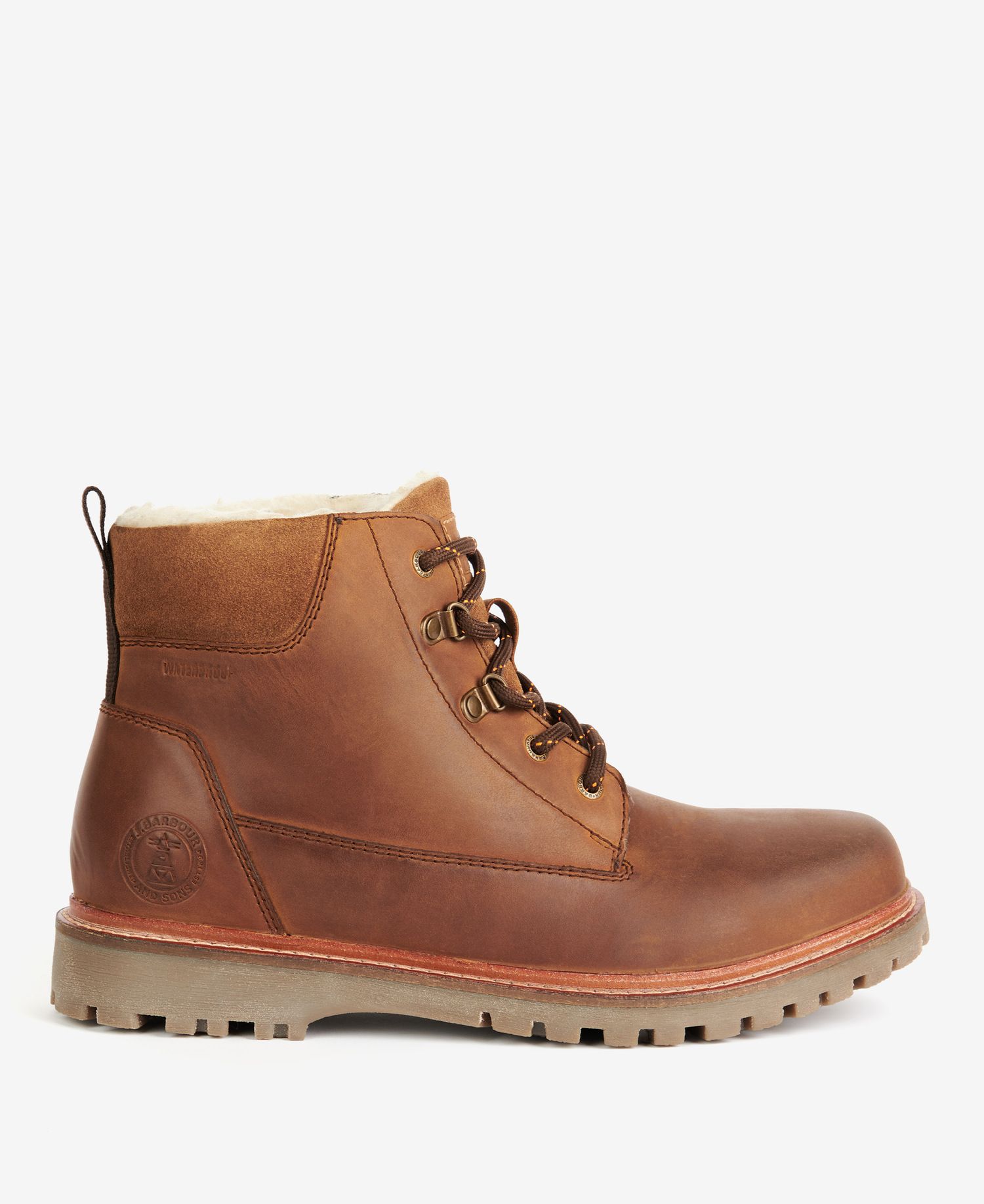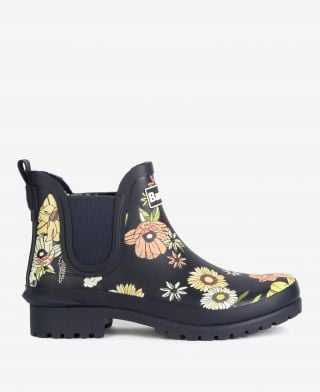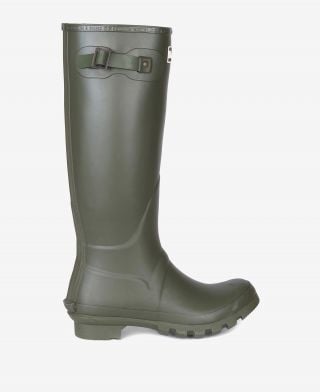- Mar 14, 2023
Wellingtons Vs Walking Boots
WELLINGTONS VS. WALKING BOOTS
Wellingtons or walking boots: a common question among hikers, festival goers and dog owners alike, but which footwear option is best suited to your needs? Whilst both types of footwear are matched to similar activities, there are some key considerations that need to be thought over.
Join us as we take a look at the pros and cons of each style and explain the fundamental differences between the two, as well as provide some recommendations on the best wellies and walking boots Barbour has to offer.
Wellingtons and walking boots: what’s the difference?
First worn by aristocrats at the beginning of the 19th century, wellington boots have long been a staple of practical footwear. Originally crafted from leather, the contemporary version is usually made from rubber or PVC. Made for outdoor and agricultural activities, wellingtons are designed for walking on wet and muddy ground to protect the wearer from heavy rain and puddles. Traditional styles of wellingtons generally reach just below the knee, but shorter lengths are also available.
For example, our Tempest Wellington Boots reflect more of the classic wellington boot style and are ideal for those who are venturing into the deep mud, thick snow, or very wet areas. Whereas, our Wilton boots offer a more contemporary style and are more suited to walking on a specified trail path or on a rainy day.
Walking boots or hiking boots are designed to protect the feet and ankles during various outdoor activities, such as backpacking, mountaineering, climbing and hiking. They’re a very important part of any avid hiker’s kit, as the quality and durability of the boots worn determine their ability to walk long distances without injury. Walking boots are constructed in a way that provides comfort for walking long distances over rough terrain. Usually crafted from nylon or leather, walking boots are very durable and often waterproof.
Whilst there are similarities between wellingtons and walking boots, with both being suitable for a number of the same activities, the fundamental difference between the two is that walking boots are designed to protect against injury, whereas standard wellington boots are not. This should be considered when determining which style of boot is suitable for your chosen venture.
Are wellies good for walking?
As we all know, the British weather can be unpredictable, meaning we have to be prepared when it comes to our choice of footwear, whether it’s a brisk walk or a venture out into the countryside. Wellingtons can be the ideal choice for wetter days, offering you more warmth and protection than any other type of shoe.
Whilst many types of wellington boots are great for walking, not all wellies are designed for this purpose. So if you’re planning on purchasing a pair for regular walks, make sure they have a tough, slip-resistant sole that offers full protection against water. Hikers should always stick to walking boots, as wellingtons won’t offer as much control and grip on uneven ground.
It is important to note that full-length wellies can feel a little different to walking boots or shoes, but the right socks and the correct size should make them more comfortable and help you adjust to wearing them.
The best boots for snow
Both wellingtons and walking boots provide great protection and grip when walking on snowy days. Like with mud, the best choice of footwear will depend on the depth of snow on the ground. Being made from rubber, wellington boots are waterproof, and a knee-length pair will ensure that even the deepest snow won’t leave you with damp trousers or socks. If you do opt for walking boots, make sure they have a thick sole and a fully waterproof upper, to prevent water from seeping inside the shoe.
The Barbour Bede Wellington boot is the perfect example of a durable and protective shoe. The boot is made from strong vulcanised rubber to ensure weather resistance, with an adjustable leg strap for comfort and a sturdy sole to provide extra grip on slippery surfaces. Alternatively, for icy days with a thin layer of snow, we recommend an ankle-length wellington boot such as the Barbour Nimbus.
Alternatively, you could also opt for a pair of walking boots that are fleece or faux fur lined, such as the Barbour Paisley Boots or the Tommy Boots. These types of walking boots are not recommended for very deep snow due to their ankle length, but they are well suited for everyday use on colder days to keep your feet warm.
ABOVE: Paisley Boots & Tommy Boots
Wellington boots pros and cons
To summarise each style of boot and help you pick the right type of footwear for your specific needs, we can take a closer look at the advantages and disadvantages that each style presents.
Pros:
-Available in different lengths so can be adapted to meet style preferences and activity requirements.
-Fully waterproof to protect feet, socks, and trousers from water and dirt.
-Suited for a wide range of activities.
Cons:
-Can be hot in the summer which may cause some discomfort.
-Full-length wellies can be more restrictive than walking boots.
-Water can still enter the boot if it is ill-fitting or the water is too deep.
Walking boot pros and cons
Pros:
-More comfortable when walking long distances, and less restrictive than wellies.
-Safer option for longer hikes/walks as they are designed to offer more support and prevent injury.
-Offer good grip on slippery surfaces
Cons:
-Not suitable for walking in deep water, snow or mud.
-Can feel quite heavy on the feet, especially after walking long distances.
-The exterior is not as easily cleaned of mud, dirt, and debris.
Wellington or walking boots: which is better?
Wellington and walking boots are both great for cold, wet conditions. But knowing which to choose can sometimes be difficult, as the answer ultimately depends on the activity/event you’re wearing them for, the weather and ground conditions that day.
If you are planning on walking long distances, or certainly if you’re going to be hiking, walking boots are the most comfortable and safest option.
Wellington boots are perfect for shorter walks in wet or muddy conditions, particularly if the mud is deep or you plan to enter a pool of water such as a lake or river, which many of us enjoy whilst out dog walking or fishing. People who work outdoors, such as farmers and gardeners, often favour the practical nature of wellingtons as they provide protection in all weather conditions - very important if you spend a lot of time on your feet outside. For this kind of activity, we recommend a style such as the Barbour Abbey. However, if you would prefer the comfort of a shorter-length shoe, we would recommend ensuring you have a sturdy and durable boot with a tough sole designed to enhance grip, such as the Storr.
ABOVE: Barbour Abbey & Storr Boot
Since festivals don’t tend to require a huge amount of travelling on foot, we’d recommend that you choose wellingtons if you only have luggage space for one pair of shoes, as outdoor venues tend to get muddier as the days go on.
Find the perfect boots at Barbour
Whether you’re looking to get into hiking, or planning out your festival wardrobe in time for summer, you’ll find a great selection of high-quality boots at Barbour for both men and women. Our wellington boots have the perfect balance of comfort, practicality and style. From classic knee-length styles to contemporary designs, you’re bound to discover the perfect pair in our collection.






